5G pioneer Huawei has to do without exactly this technology in the P50 series, which is only being presented for China. Due to US restrictions, the P50 and P50 Pro may support a maximum of LTE. Sanctions in chip production lead to a bottleneck at HiSilicon, so Qualcomm steps in. The P50 series focuses on the camera again.
So far, Huawei has been able to bring every new launch practically free of restrictions on the stage. In the software sector in particular, after the forced spin-off from Google, the company has built up its own ecosystem with Huawei Mobile Services, the AppGallery and most recently HarmonyOS 2.0, which has also picked up speed outside of China. The other construction site, however, is hardware, as can now be clearly seen from the limitations of the new P50 series.
Already with the new MatePads, with the mixed use of Snapdragon 865 and Kirin 9000E as well as the waiver of variants with cellular communications, it became apparent that Huawei can no longer freely decide which chips and technologies are used in the devices. This can be seen even more clearly in the new P50 series, which was initially only presented for the Chinese market.
Snapdragon 888 and Kirin 9000 without 5G
Since Huawei has not been allowed to manufacture at TSMC for a long time because US technologies are used there, Huawei's chip manufacturer HiSilicon was no longer able to develop new high-end SoCs after the Kirin 9000. The chip introduced with the Mate 40 Pro was deliberately pre-produced in bulk and stockpiled in order to equip future products with it, but these reserves now seem to have been exhausted. This fact now means that most variants of the smartphone in the P50 series are equipped with Snapdragon 888. Qualcomm has an exemption for deliveries to Huawei, but also only for chips without 5G support. That is why the P50 and several versions of the P50 Pro use the Qualcomm chip in a pure 4G variant. Huawei's or HiSilicon own Kirin 9000 is only used in the three larger configurations of the P50 Pro, but also there without 5G, because licenses on US technologies would violate the trade embargo.
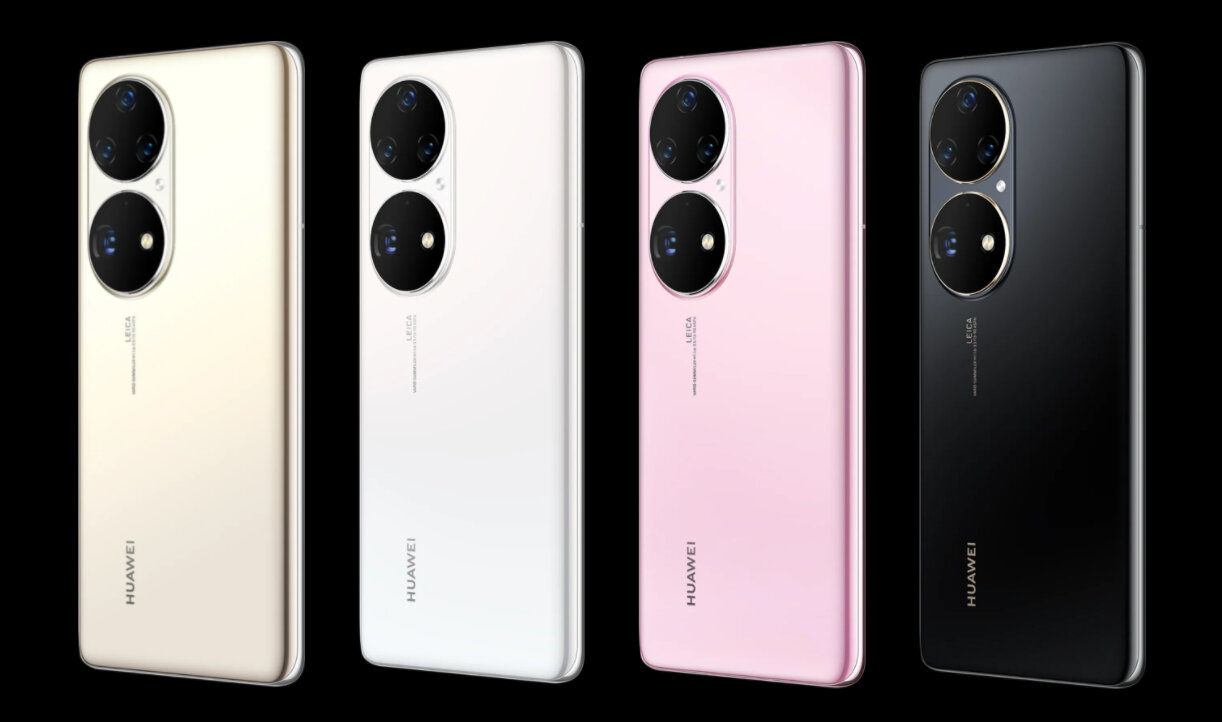
Cameras cover a focal length of 13 to 2,700 mm
Apart from this curious and for Huawei also tragic situation, the new P50 series has again been developed with a focus on the camera. The different sensors and lenses of both variants are housed in two huge circles on the back and were again coordinated together with our long-term partner Leica. The P50 uses a large 50 megapixel sensor for the main camera with a 23 mm focal length at f/1.8. These are joined by sensors with 13 megapixels for the 16 mm ultra-wide angle and 12 megapixels for the 125 mm telephoto with f/3.4 and OIS. Including AI-supported digital magnification, Huawei speaks of 80x zoom, which covers 16 to 1,350 mm.
The P50 Pro uses the same sensor for the main camera, but equipped with OIS. An additional sensor with 40 megapixels, 26 mm and f/1.6 is responsible for black and white photography. In addition, the Pro model also has 13 megapixels with f/2.2 for ultra-wide-angle photos, but here with a focal length of 13 instead of 16 mm. The more powerful telephoto works with a periscope again and has a focal length of 90 mm at f/3.5 including OIS. Overall, the smartphone, including the digital magnification, should cover focal lengths from 13 to 2,700 mm (200x). Only the P50 Pro also comes with a laser autofocus, but again for both devices there is a sensor for recording the color temperature of the environment, which now works with 10 instead of 8 channels. The image processing takes place within the engine called “XD Fusion Pro”, the results of which Huawei demonstrated several times during the presentation as being superior to the iPhone 12 Pro Max and Galaxy S21 Ultra.
-
 Huawei P50 (Image: Huawei)
Huawei P50 (Image: Huawei)
Image 1 of 4
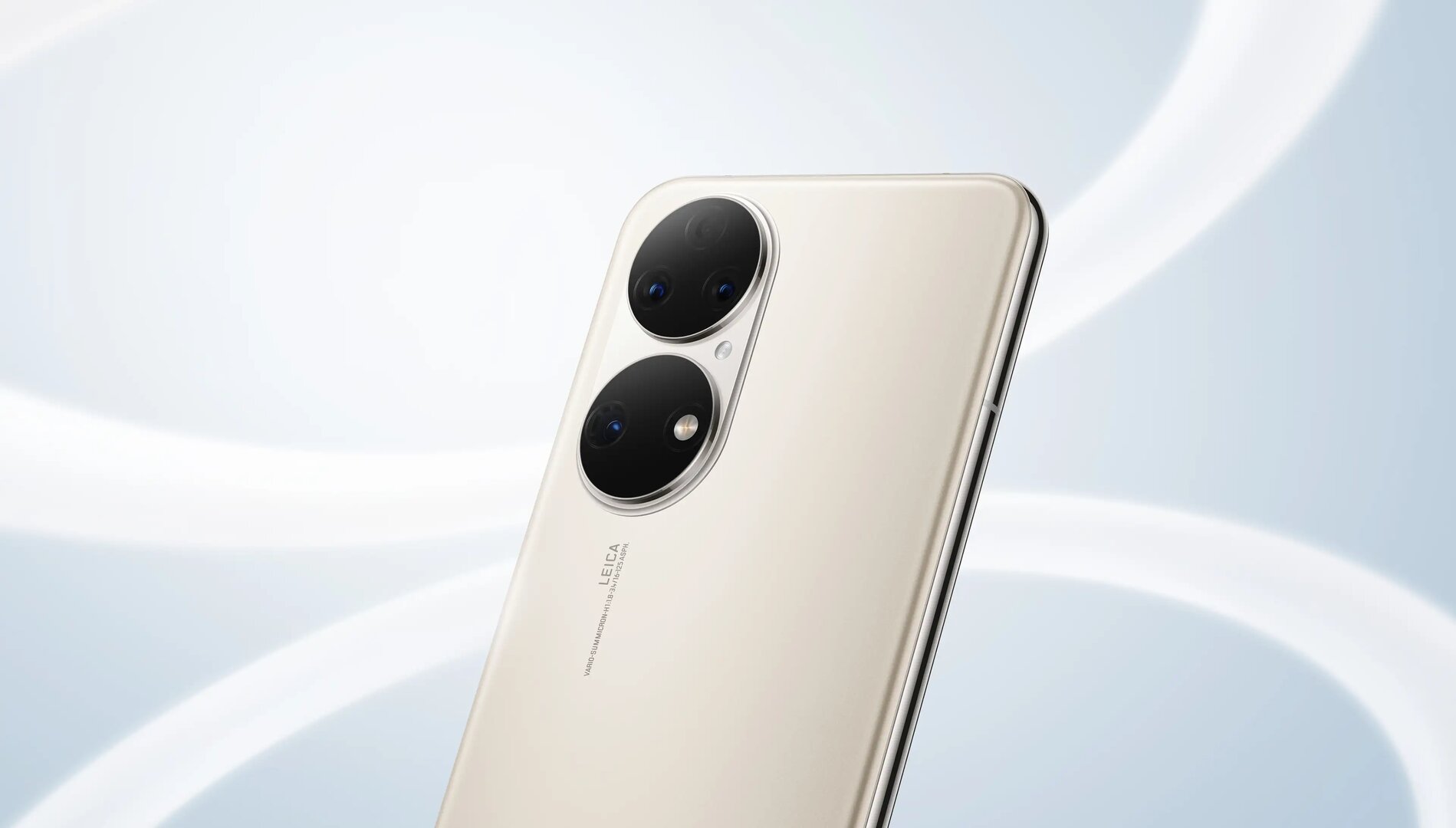 Huawei P50
Huawei P50 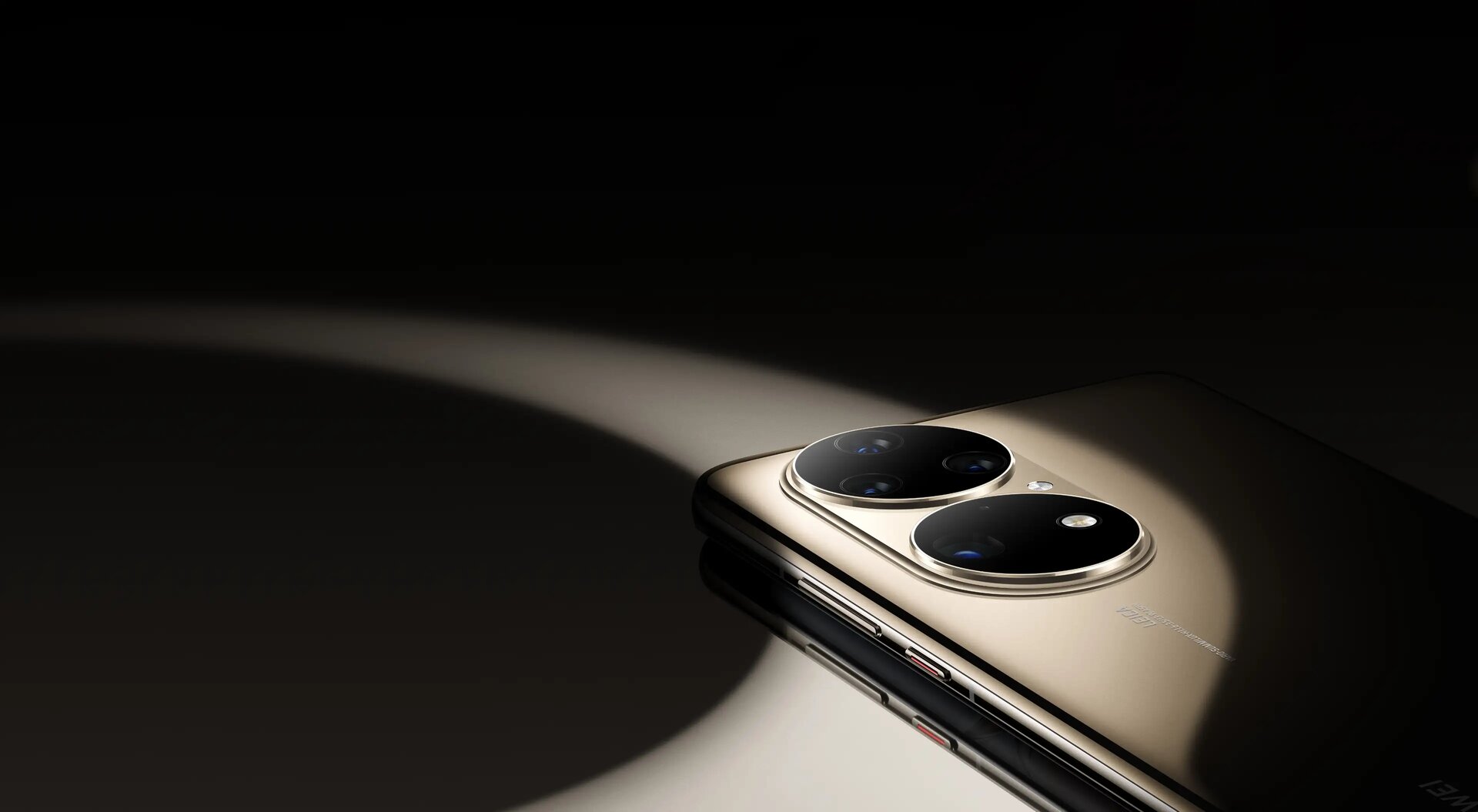 Huawei .50 Pro
Huawei .50 Pro figure> 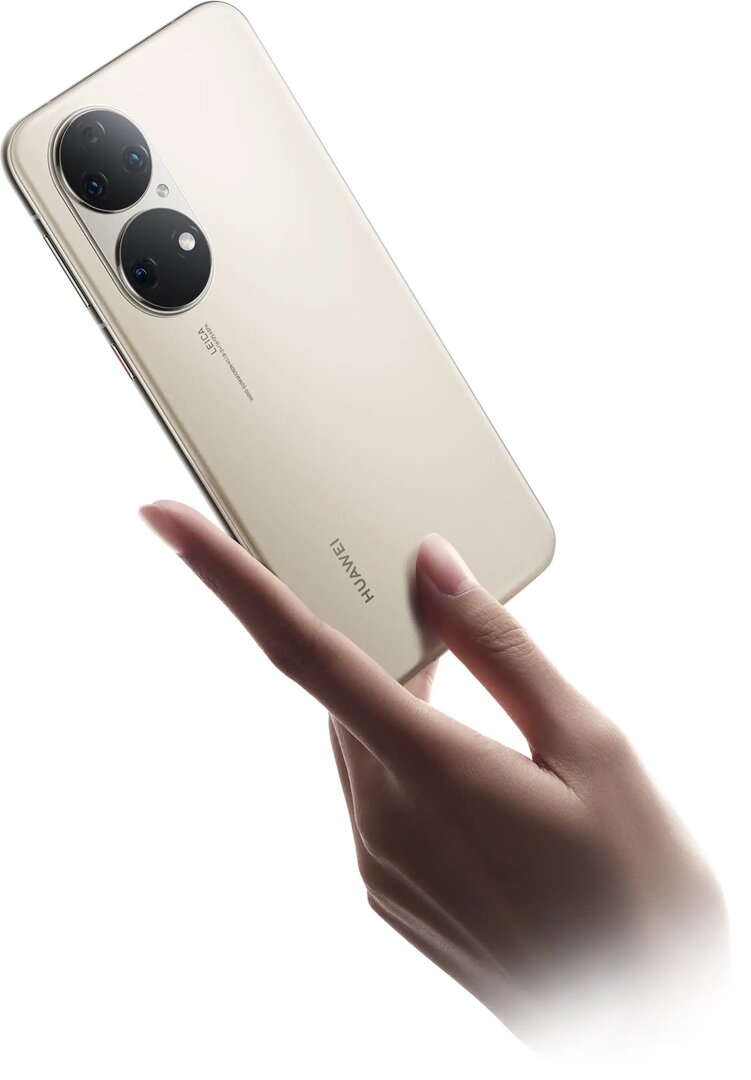 Huawei P50
Huawei P50
Both new Huawei smartphones come with an OLED display, but that of the P50 Pro is 0.1 inches larger due to a slight curve towards the frame. This results in slightly different resolutions of 1,224 × 2,700 and 1,228 × 2,700 pixels on 6.5 “and 6.6” respectively. Another difference of the P50 Pro is the refresh rate increased from 90 to 120 Hz. Both displays support HDR and the P3 color space, which has recently also been used for photos instead of the sRGB color space. Huawei has abolished the formerly large “pill” for the dual front camera. Instead, the selfie camera is now located at the top in a central recess and takes pictures with 13 megapixels – with the P50 Pro with autofocus.
Larger batteries and HarmonyOS 2.0
Other technical features include batteries that have been enlarged to 4,100 mAh and 4,360 mAh as well as fast charging with 66 watts. The P50 Pro supports wireless charging with a maximum of 50 watts. Both devices offer USB 3.1 Type C, IP68 and a memory expansion with Huawei NM Card, which has the format of a nano SIM card and occupies the second slot, so that dual SIM can no longer be used when it is used.
Because the P50 series is currently only intended for the Chinese market, the smartphones run with HarmonyOS 2.0, including their own AppGallery and China-specific apps. In Huawei's home country, the P50 Pro configurations with Kirin 9000 will initially hit the market on August 12, with the 12 GB RAM models planned for September. The versions with Snapdragon 888 will follow towards the end of the year. The regular P50 comes exclusively with Snapdragon 888 and is planned for September.
-
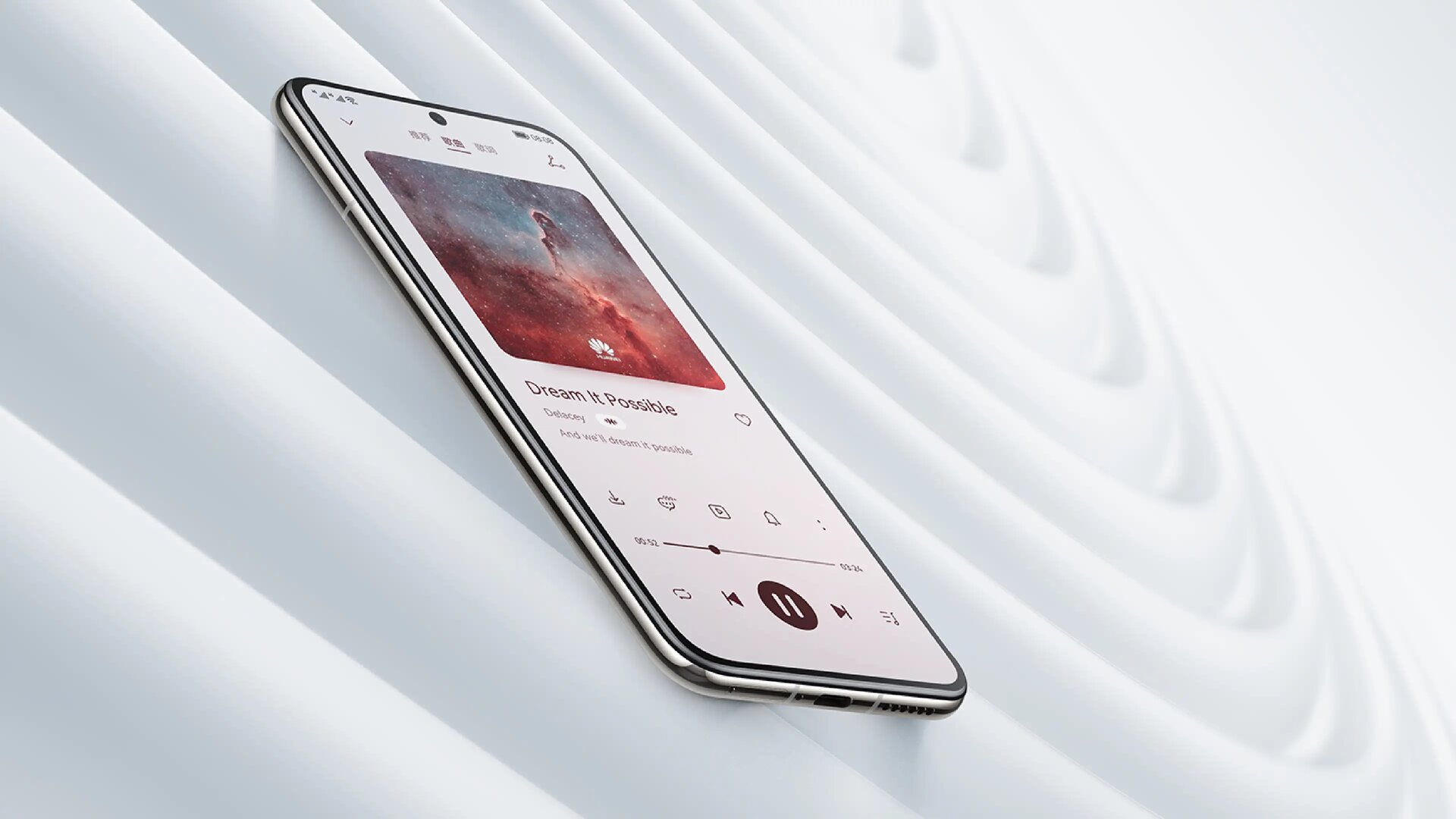 Huawei P50 (Image: Huawei)
Huawei P50 (Image: Huawei)
Image 1 of 6
 Huawei P50
Huawei P50  Huawei P50 Pro
Huawei P50 Pro Prices start at 585 and 780 euros
The P50 with 8 GB/128 GB costs the equivalent of 585 euros, the model with 8 GB/256 GB is 650 euros. The P50 Pro starts with 8 GB/128 GB at the current exchange rate at 780 euros. For the variant with 8 GB/256 GB, Huawei calls up 845 euros and for 8 GB/512 GB it is 975 euros. It gets more expensive with 12 GB RAM and 512 GB storage for 1,040 euros and in a special black tone for the equivalent of 1,105 euros.
Huawei P50, Huawei Mate 40 ProHuawei P30Huawei P30 ProHuawei P30 Pro New EditionHuawei P40Huawei P40 ProHuawei P40 Pro + Huawei P50 ✔ Huawei P50 Pro ✔ Huawei P50 Pro Huawei Mate 40 ProHuawei P30Huawei P30 ProHuawei P30 Pro New EditionHuawei P40Huawei P40 ProHuawei P40 Pro + Huawei P50 ✔Huawei P50 Pro ✔ Software:
(when released) HarmonyOS 2.0 Display: 6.50 inches, 1,224 × 2,700 × 456 ppi, 90 Hz
OLED, HDR 6.60 inches, 1,228 × 2,700
449 ppi, 120 HzOLED, HDR operation: touch, fingerprint sensor, face scanner SoC: Qualcomm Snapdragon 888
1 × Kryo 680 Prime, 2.84 GHz
3 × Kryo 680 Gold, 2.42 GHz
4 × Kryo 680 Silver, 1.80 GHz
5 nm, 64-bit Qualcomm Snapdragon 888
1 × Kryo 680 Prime, 2.84 GHz
3 × Kryo 680 Gold, 2.42 GHz
4 × Kryo 680 Silver , 1.80 GHz
5 nm, 64-bit variant HiSilicon Kirin 9000
1 × Cortex-A77, 3.13 GHz
3 × Cortex-A77, 2.54 GHz and 4 × Cortex-A55 , 2.05 GHz
5 nm, 64-bit GPU: Adreno 660
840 MHz Adreno 660
840 MHz variant Mali-G78 MP24
759 MHz RAM: 8,192 MB or LPDDR5 8,192 MB or LPDDR5 variant 12,288 MB or LPDDR5 memory: 128/256 GB (expandable) 128/256/512 GB 1st camera: 50.0 MP, 2160p
dual-LED, f/1.8, AF 50.0 MP, 2160p
dual-LED, f/1.8, AF, OIS 2. Camera: 13.0 MP , f/2.2 40.0 MP, f/1.6, AF 3rd camera: 12.0 MP, f/3.4, AF, OIS 13.0 MP, f/2.2 4th camera: No 64.0 MP, f/3.5, AF, OIS 5. Camera: No 1. Front camera: 13.0 MP, 2160p
Display flash, f/2.4 13.0 MP, 2160p
Display flash, f/2.4, AF 2nd front camera: No GSM: GPRS + EDGE UMTS: HSPA +
↓ 42.2 ↑ 5.76 Mbit/s LTE: Advanced Pro 5G: No WLAN: 802.11 a/b/g/n/ac/ax
Wi-Fi Direct Bluetooth: 5.2 Location: A-GPS, GLONASS, BeiDou, Galileo, QZSS, NavIC Other standards: USB 3.1 Type C, NFC SIM card: Nano SIM, dual SIM battery: 4,100 mAh, 66.0 W
permanently installed 4,360 mAh, 66.0 W
permanently installed, wireless charging Size (W × H × D): 73.8 × 156.6 × 7.92 mm 72.8 × 158.8 × 8.50 mm Protection class: IP68 Weight: 181 g 195 g Price: € 585/€ 650 780 €/845 €/975 €/1,040 €

